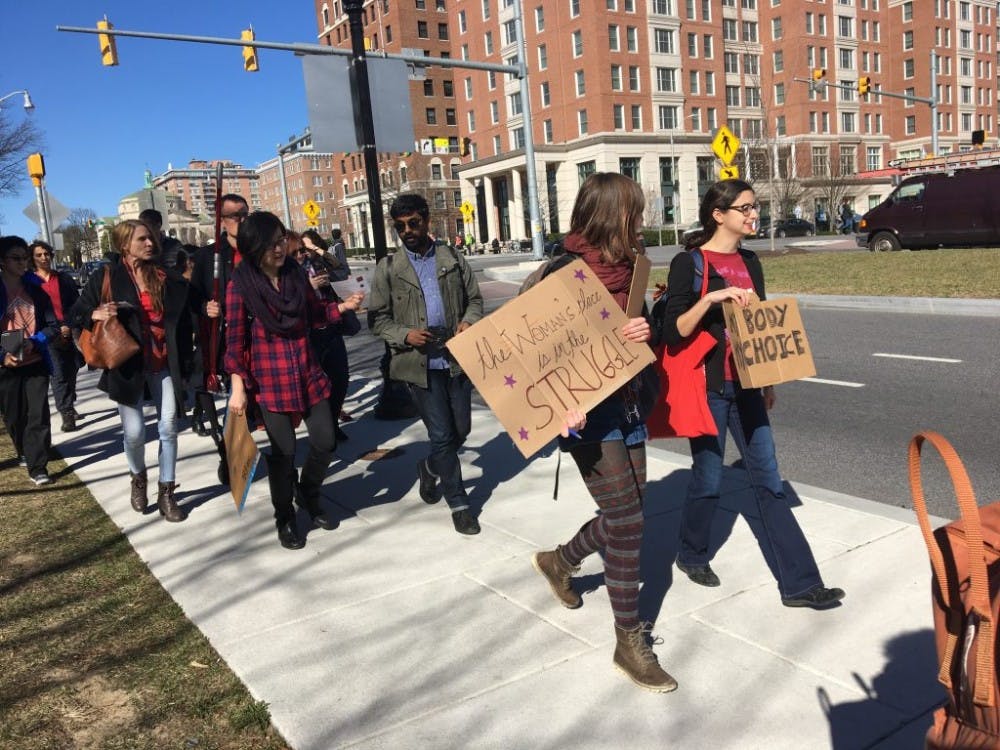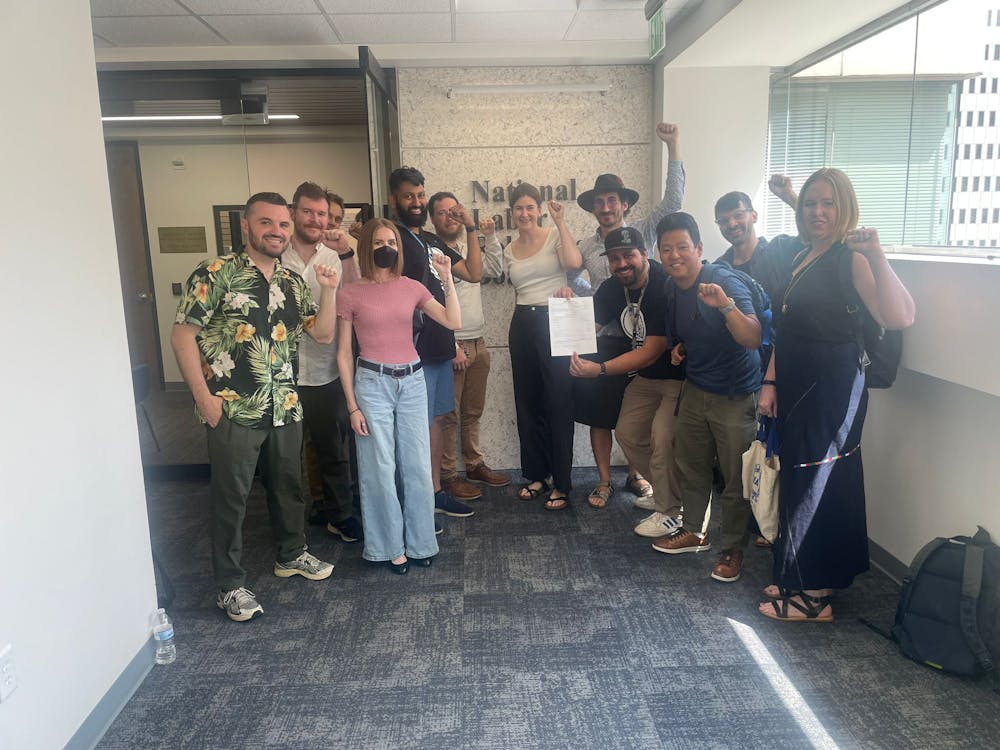A group of roughly 30 Hopkins graduate and undergraduate students gathered at the top of the Beach and walked to People’s Park at 2011 N. Charles Street to join a larger protest march to mark International Women’s Day in Baltimore on Wednesday afternoon.
The organizers of the Jan. 21 Women’s March on Washington branded the day as “A Day without a Woman,” encouraging women to walk away from work for a day and not spend money to highlight their influence on the economy as a form of protest.
Participants in the Baltimore march walked to the Women’s Detention Center and to Douglas Homes. The march destinations highlighted the need for reduced incarceration rates and better housing for women.
The rally was sponsored by Hopkins Feminists, Hopkins for the Homeless, Hopkins College Democrats, Voice for Choice, Hopkins Progressives, Students for a Democratic Society and Teachers and Researchers United (TRU).
Two organization representatives briefly spoke about the aims for the march.
Sociology graduate student Sam Agarwal from TRU praised the thousands of women’s marches that have taken place throughout history.
“There is a long history of women participating in International Working Women’s Day,” Agarwal said. “20,000 workers walked out of work and for 14 weeks they brought production down. They struck for better pay, better working conditions and better rights. Let’s embrace workers’ struggles happening on the Hopkins campus today.”
She cited the lack of maternity leave options available for graduate students as an area of concern.
“One of the issues is that graduate students don’t have a concerted policy for leave. Some have to come back to work after birth,” Agarwal said. “I want to emphasize that this is a protest about gender struggle and worker’s rights.”
Professor in the Department for German and Romance Languages and Literatures Derek Schilling from the Hopkins chapter of American Association of University Professors (AAUP) spoke about the wage gap facing women workers.
Schilling also brought a mop and a bucket filled with pennies to represent women’s lost wages due to pay inequality.
He spoke about his passion for academic freedom, saying that universities should allow professors to express their social and political views more freely.
Schilling believes this right is restricted in order to avoid misrepresenting a university’s stance. He also wants to fix gender wage gaps for faculty.
“Think of all the pennies lost over the years,” Chilling said. “For the next four years, we’re going to be washing crud off of the walls. Let your lawmakers know about your concerns.”
Protesters also waved signs which read, “We are in solidarity,” “No justice no peace,” “No human is illegal” and “Kickin’ ass for the working class.”
As participants began to walk south towards the main protest at People’s Park, they chanted their disapproval of President Donald Trump: “Hey-hey, ho-ho, Donald Trump has got to go!”
Caroline Cevallos, a member of the Yesplus Club, which works to enhance leadership and social engagement, participated in the march and explained the event’s significance to their group specifically.
“We’re from the Yesplus Club, and we care a lot about women underrepresented in STEM, rights for women in the workplace,” she said.
Cevallos believes Trump’s presidency has catalyzed an increase in liberal activism, but that the issues they sought to address are not new.
“These events are a long time coming,” she said.
Agarwal pointed out that men were welcome to speak on behalf of women’s rights, even though most of the participants were women.
OXIDE Research and Program Manager Dontarie Stallings said he participated in the march to support the women who supported him throughout his life.
“I came to the march because everyone should be a feminist,” Stallings said. “Every man has mothers and wives and sisters and they should want the people they love to have the same opportunities for excellence as they have,” he said.
Srikant Iyer, an associate research scientist in chemistry, spoke about how this was his first march.
“I’m absolutely in support of women’s equality, and from an educator’s point of view, I think that women have so much to offer to push the way humanity thinks, the direction of science, social science and improving lives,” he said.
The first International Women’s Day observance was held on March 8, 1914, but Women’s Day has a long history before then, with marches taking place on various dates.
Most of the protests in the U.S. and Europe were for women’s suffrage and better working conditions, and protests in Russia had larger political motivations such as the end of World War I.
Initially started by socialist organizations, it was recognized by the U.N. in 1975. This year, it branded the day as “Women in the Changing World of Work: Planet 50-50 by 2030.”





